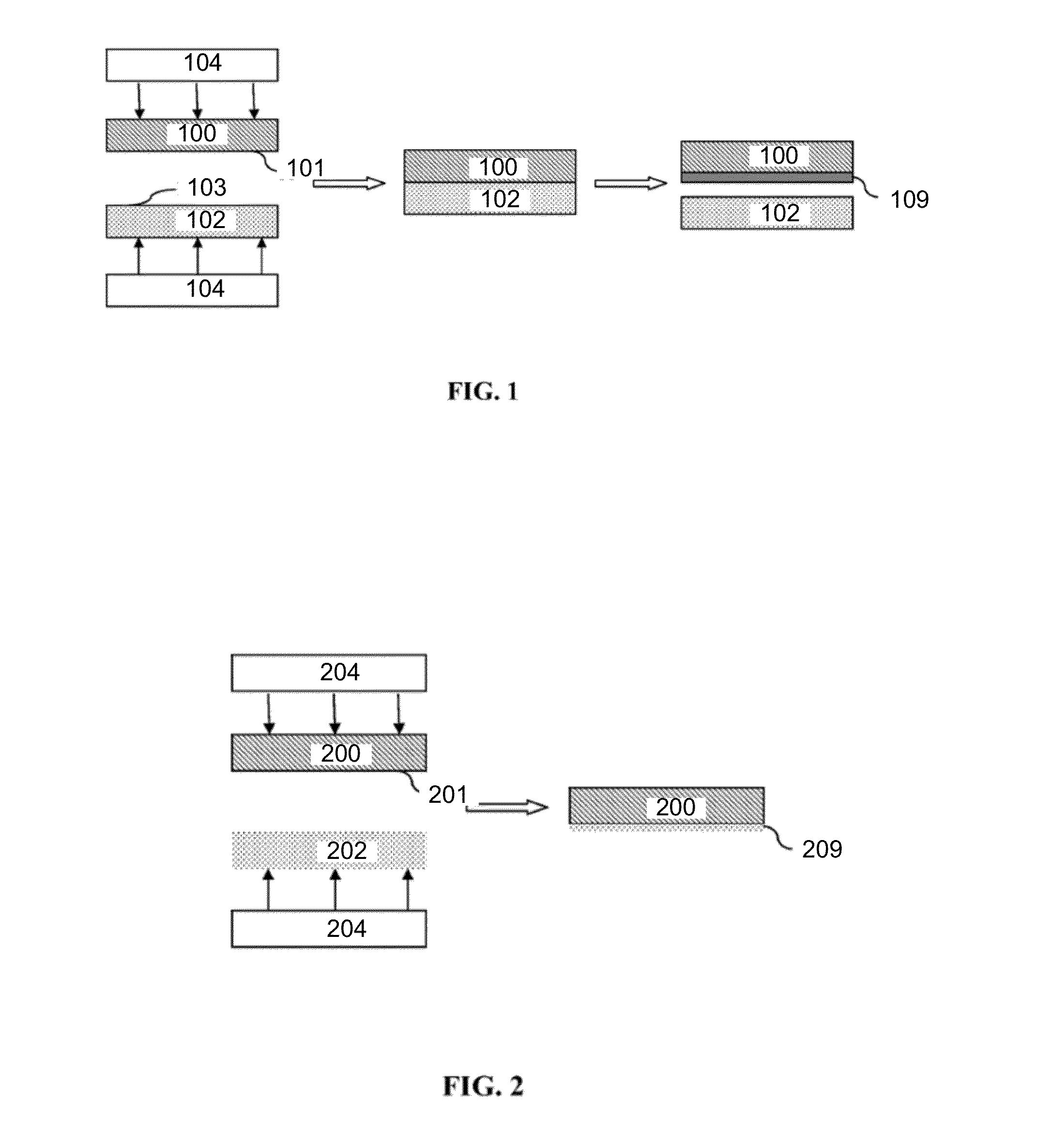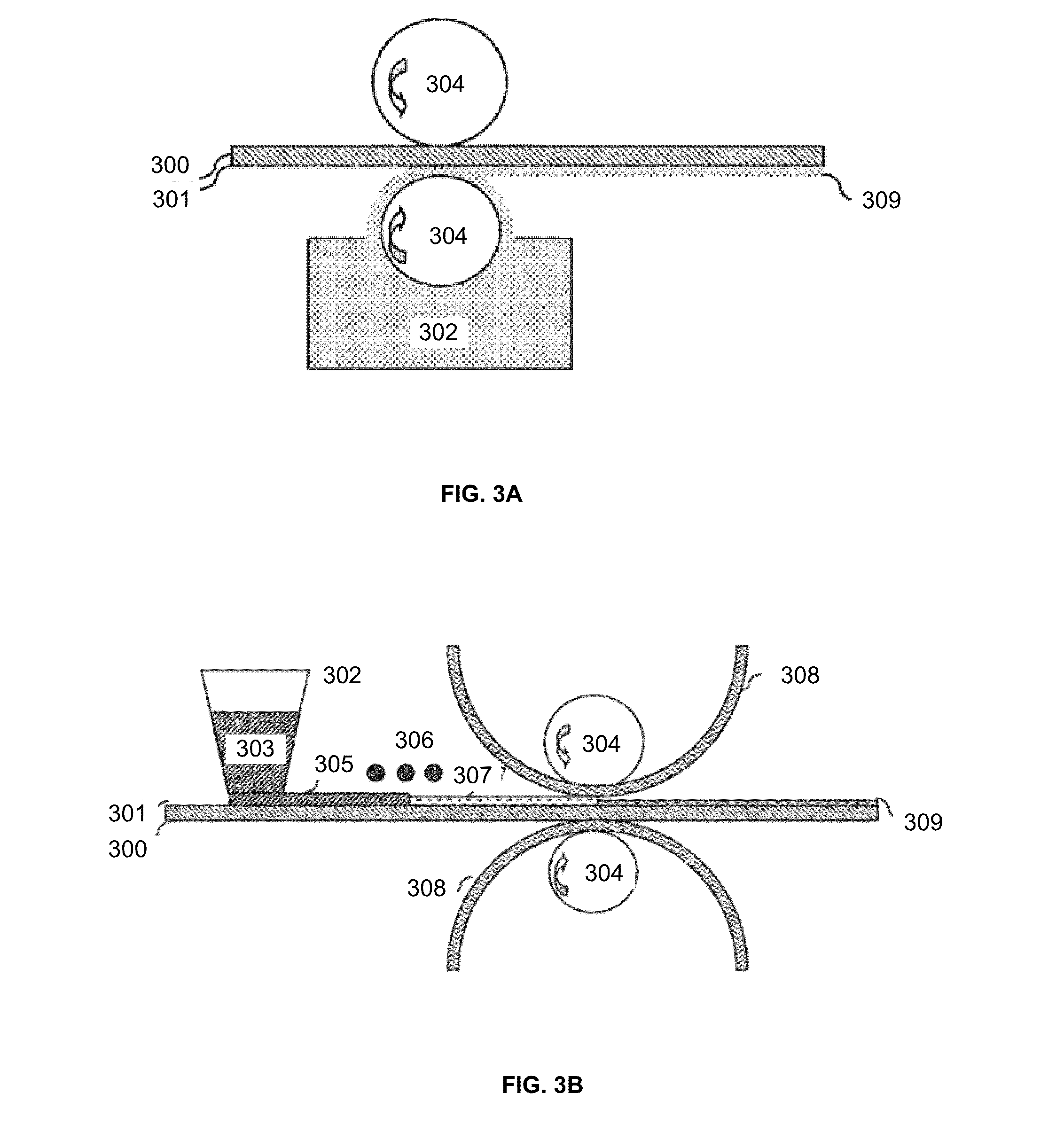Polymer having optically transparent superhydrophobic surface
a superhydrophobic surface, optically transparent technology, applied in the direction of roads, instruments, traffic signals, etc., can solve the problems of reducing the surface hydrophobicity, permanent loss of its superhydrophobicity, and artificial superhydrophobic surfaces suffering from poor mechanical and/or chemical stability, etc., to achieve excellent mechanical properties, static and dynamic water pressure resistance, chemical resistance, abrasion resistance, etc.
- Summary
- Abstract
- Description
- Claims
- Application Information
AI Technical Summary
Benefits of technology
Problems solved by technology
Method used
Image
Examples
example 1
Fabricating Polymer Sheets Having a Superhydrophobic Surface by Using a Template
[0123]Materials, methods and surface fabrication: A commercially available thermoplastic sheet of low density polyethylene (LDPE) manufactured by Berry Plastics (Evansville, Ind.) from 97% recycled polyethylene, 2% calcium carbonate and 1% slip oleamide and sold through McMaster-Carr was used as the polymer substrate. The thickness of the LDPE film was 100 micrometers and 10 layers of the LDPE film were used at each time to make free-standing superhydrophobic sheets that were approximately 1 mm thick. The polymer film softens at 106° C. and melts over the range from 113-120° C. Three types of stainless steel mesh (i.e., M1, M2, and M3) and one type of nylon mesh (i.e., M4) (all from McMaster-Carr) with different wire diameters and pore sizes were used as templates. The structures and details of the mesh are shown in Table 1 below.
TABLE 1Parameters of mesh templates for fabricating superhydrophobic surfac...
example 7
Fabricating Polymer Sheets Having a Superhydrophobic Surface by Using a Template Coated with a Porous Nanoparticle Layer and a Polymer Sheet Coated with a Layer of Porous Nanoparticle Layer
[0149]The same Ultra-high-molecular-weight polyethylene (UHMWPE, McMaster Carr, Elmhurst, Ill.) used in Example 2 was used as the polymer sheet. A steel mesh with a pore size of 309 micrometers and a wire diameter of 114 micrometers was used as the template. First, a thixotropic solution was prepared by dispersing silane-treated hydrophobic nanoparticles (e.g. TS-530 from Cabot Corporation) into an appropriate solvent (e.g. a mixture of 30 wt % water and 70 wt % methanol). Subsequently, the polymer sheet and the mesh template were coated with the prepared solution and dried at 150° C. for 10 minutes. The thickness of the nanoparticles on the polymer sheet was around 150 micrometers. The coated mesh and the coated polymer sheet were placed between two flat stainless steel plates. The assembly was t...
example 8
Superhydrophobic Polymer Composite Materials with Self-Cleaning Properties and Photo-Induced Wetting and Dewetting Properties
[0151]A commercially available thermoplastic sheet of high density polyethylene (HDPE) from McMaster-Carr was used as the polymer substrate. A precision woven nylon mesh (371×371, from McMaster-Carr) was used as the template to create microstructures on the polymer surface. The wire diameter and the pore size of the nylon mesh were 33 micrometers and 36 micrometers, respectively. TiO2 nano particles (from Sigma-Aldrich) with a size ranging from 20-100 nm were used to create nanostructures on the polymer surface. According to the supplier, the phase of the TiO2 particles was a mixture of rutile and anatase. The hybrid photocatalytic-superhydrophobic surfaces were fabricated using Method 3 described above. The thickness of the TiO2 particles layer was about 100 micrometers, and the thickness of the HDPE polymer sheet was 0.03 inch. The stack-up was heated up to ...
PUM
| Property | Measurement | Unit |
|---|---|---|
| diameter | aaaaa | aaaaa |
| melt viscosity | aaaaa | aaaaa |
| depth | aaaaa | aaaaa |
Abstract
Description
Claims
Application Information
 Login to View More
Login to View More - R&D
- Intellectual Property
- Life Sciences
- Materials
- Tech Scout
- Unparalleled Data Quality
- Higher Quality Content
- 60% Fewer Hallucinations
Browse by: Latest US Patents, China's latest patents, Technical Efficacy Thesaurus, Application Domain, Technology Topic, Popular Technical Reports.
© 2025 PatSnap. All rights reserved.Legal|Privacy policy|Modern Slavery Act Transparency Statement|Sitemap|About US| Contact US: help@patsnap.com



